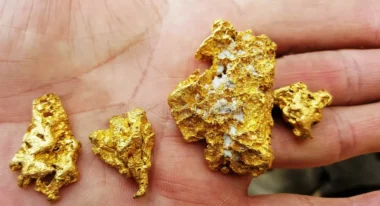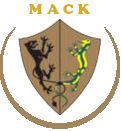 Gold is neither a mere metal nor a commodity. It is an idea embodied in matter. It is the silence of the earth turned into light. From the moment humans first drew that yellow glint from the soil, they never stopped searching. The path of gold became the path of civilization — across frozen rivers, shadowed jungles, arid deserts, wars, discoveries, betrayals, and hopes.
Gold is neither a mere metal nor a commodity. It is an idea embodied in matter. It is the silence of the earth turned into light. From the moment humans first drew that yellow glint from the soil, they never stopped searching. The path of gold became the path of civilization — across frozen rivers, shadowed jungles, arid deserts, wars, discoveries, betrayals, and hopes.
El Dorado. A legend that became direction
In the early 16th century, Spanish conquistadors ventured deep into South America, drawn by rumors of a lost land known as El Dorado. The story told of a ruler who covered himself in gold dust and washed it off in the sacred waters of Lake Guatavita, near modern-day Bogotá. Thus was born a myth that became not a destination, but a continuous motion.
Francisco de Orellana, Pedro de Ursúa, Lope de Aguirre — names of those who followed the glint of illusion. They never found a city built of ingots, yet their routes laid the foundations for the geographic exploration of the Amazon. El Dorado never existed as a point on a map, but it existed as a point in the human mind. A point toward which man moves when he dares to go beyond.
Klondike. Cold that ignited motion
August 1896. Bonanza Creek, in the territory of the Klondike. The discovery of gold triggered one of the largest migrations in North American history. By 1898, over one hundred thousand people had moved north, crossing mountain passes, enduring snow, hunger, and despair. Settlements like Skagway, Dawson, and Nome were born. They rose from nothing and became temporary capitals of human will.
Not everyone found gold, but all were tested. New destinies, new literatures, new nations emerged. Jack London, who lived through the Klondike fever, turned it into lasting literature. Where the air froze, the spirit burned.
The axial metal of history
In Ancient Egypt, gold symbolized immortality. In Lydia, in the 7th century BCE, it became the material of the world’s first minted coins. In Rome it upheld order. In the Middle Ages it adorned dynasties. In the twentieth century it underpinned the Bretton Woods monetary system.
But the true power of gold lies not in where it was kept, but in where it led. Gold did not let man rest. It shattered horizons. It lifted him from the ordinary and pointed him toward the unknown.
It was not matter, but vector. Not goal, but movement.
Today. The echo of the ancient call
Today, gold is stored in banks, gleams in vitrines, and trades on markets. Yet its archetypal role remains. It stands not for accumulation, but for readiness — for tension toward something greater. It whispers that humanity can still cross vast distances when it sees meaning ahead.
Gold continues to lead. And it continues to shape the human being — the one who walks not for guarantee, but for light.
